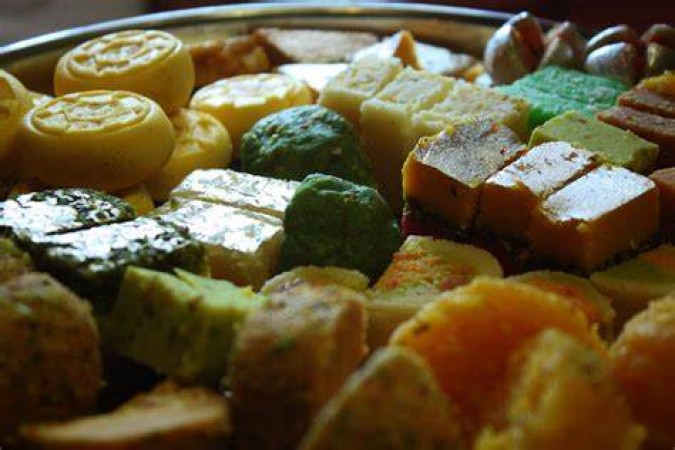
India, a land of diverse culture and rich heritage, is renowned for its delectable cuisine and mouthwatering desserts. Indian desserts, often referred to as "mithai," play an integral role in celebrations, religious festivals, and family gatherings. These sweet delicacies hold centuries of tradition and are cherished by people of all ages. In this article, we will explore the delightful world of traditional Indian desserts and sweets, highlighting their significance, flavors, and cultural importance.
Indian desserts have a long history dating back to ancient times. They are a celebration of culinary expertise, blending various ingredients, and striking a perfect balance between flavors. The art of making these desserts has been passed down through generations, with each family adding its unique touch.
Rich Heritage of Indian Desserts
The Indian subcontinent boasts a rich heritage of desserts, each region contributing its own distinct flavors. The country's diverse geographical and cultural influences have given rise to a myriad of sweets that vary in taste, texture, and presentation.
Popular Traditional Indian Sweets
Halwa Varieties
Halwa, a sweet pudding, holds a special place in Indian households. Whether it's the carrot-infused Gajar ka Halwa or the semolina-based Sooji Halwa, these treats are an epitome of indulgence.
Ladoo Delights
Ladoos, round and delectable sweets, are a symbol of celebration and joy. Besan Ladoo, Motichoor Ladoo, and Coconut Ladoo are among the favorites savored during festivities.
Mouthwatering Barfis
Barfi, a fudge-like sweet, comes in a plethora of flavors. From the classic Kaju Barfi made with cashews to the exotic Mango Barfi, each bite is a burst of delight.
Delectable Indian Desserts
Rasgulla and Rasmalai
Originating from West Bengal, Rasgulla and Rasmalai are popular milk-based sweets that have gained popularity across the nation. The spongy texture of Rasgulla and the creamy richness of Rasmalai leave an everlasting impression.
Gulab Jamun
Gulab Jamun, deep-fried milk dumplings soaked in sugar syrup, is an all-time favorite. Its luscious taste makes it an inseparable part of festivals and celebrations.
Kheer and Payasam
Kheer and Payasam are Indian rice puddings infused with cardamom, saffron, and dry fruits. These desserts are a delightful conclusion to any meal.
Regional Specialty Sweets
Mysore Pak from Karnataka
Mysore Pak, a specialty of Karnataka, is a buttery and rich dessert made from gram flour, ghee, and sugar. Its origins can be traced back to the kitchens of the Mysore Palace.
Sandesh from West Bengal
Sandesh, a Bengali delicacy, is prepared with fresh cottage cheese and flavored with delicate saffron, cardamom, or rosewater. It's a celebration of the region's love for dairy.
Petha from Uttar Pradesh
Petha, hailing from the city of Agra, is a translucent sweet made from ash gourds and flavored with hints of saffron and cardamom. It represents the traditional confectionery of Uttar Pradesh.
Fusion of Tradition and Modernity
In recent times, traditional Indian desserts have witnessed innovative transformations to cater to the evolving palates of people. Chefs and home cooks alike experiment with ingredients, textures, and presentations, giving rise to fusion desserts.
Contemporary Dessert Trends
The culinary world is witnessing an amalgamation of traditional flavors with modern techniques. Desserts like Chocolate Samosas and Saffron-infused Cheesecakes showcase the dynamic nature of Indian sweets.
Unique Dessert Innovations
Artisans are constantly pushing the boundaries of creativity by introducing desserts that incorporate indigenous fruits, herbs, and spices. Such innovation keeps the essence of tradition alive while infusing a breath of fresh air.
The Essence of Festivals and Celebrations
Indian festivals are incomplete without the exchange of sweets and desserts. Let's explore some of the festivals where these sweets hold particular significance.
Diwali and the Festival of Lights
Diwali, the festival of lights, witnesses the exchange of mithai as a gesture of prosperity and happiness. Sweets like Kaju Katli and Jalebi grace every household during this auspicious occasion.
Eid and the Sweet Eid Treats
Eid-ul-Fitr, the festival that marks the end of Ramadan, is celebrated with sweet fervor. Seviyan, a vermicelli-based dessert, and Shahi Tukda, a royal bread pudding, are relished on this day.
Raksha Bandhan and the Sweet Bond
Raksha Bandhan celebrates the bond between brothers and sisters. On this day, brothers are greeted with love and affection, along with the sweetness of delectable desserts.
Preserving Culture and Flavors
Despite the evolution of taste preferences, the tradition of preparing Indian sweets at home remains intact. Families take pride in passing down their secret recipes through generations.
Family Recipes Passed Down
The art of making Indian sweets is often a closely guarded family secret. These age-old recipes carry not just the flavors but also the memories of joyous celebrations.
The Role of Indian Sweet Shops
Indian sweet shops, with their vast array of delicacies, continue to be an integral part of Indian culture. They offer a taste of tradition to those seeking authentic mithai.
Health Considerations
While indulging in the sweet pleasures, it is essential to maintain a balance for a healthy lifestyle.
Using Natural Ingredients
Many traditional Indian desserts utilize natural ingredients like nuts, milk, and fruits, providing nutritional benefits along with sweetness.
Moderation and Balance
Practicing moderation in consumption allows people to enjoy the treats without compromising their health.
Traditional Indian desserts and sweets are more than just culinary delights; they represent the country's culture, heritage, and the warmth of family celebrations. As the world continues to change, these sweet delicacies remain an integral part of India's identity, embracing both tradition and innovation.
Sandwich Perfection: Expert Tips to Upgrade Your Lunchtime Favorites
Food Photography Masterclass: Capturing Irresistible Sandwiches for Social Media Success